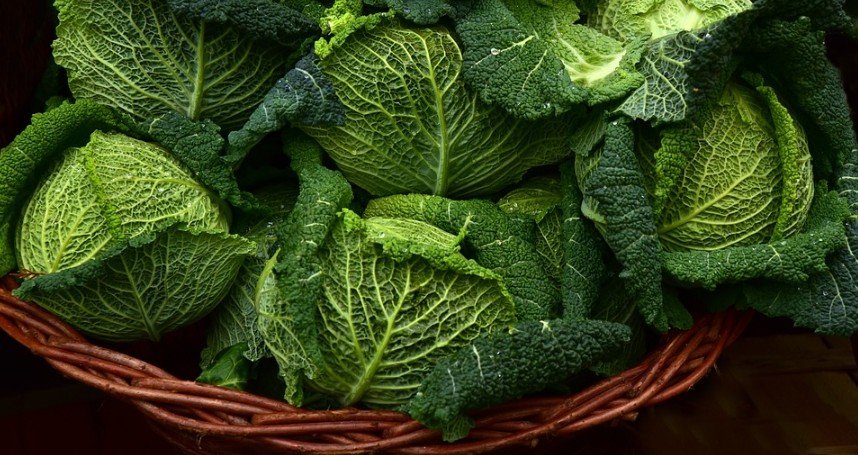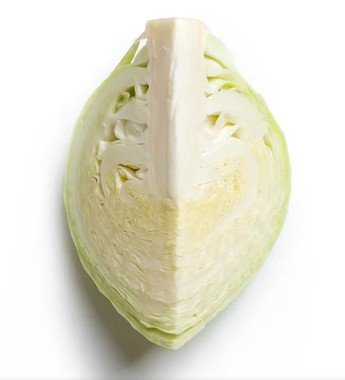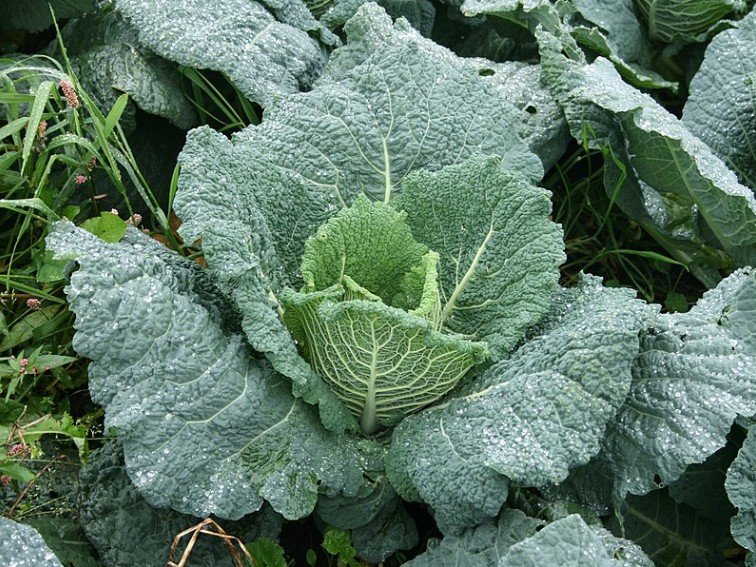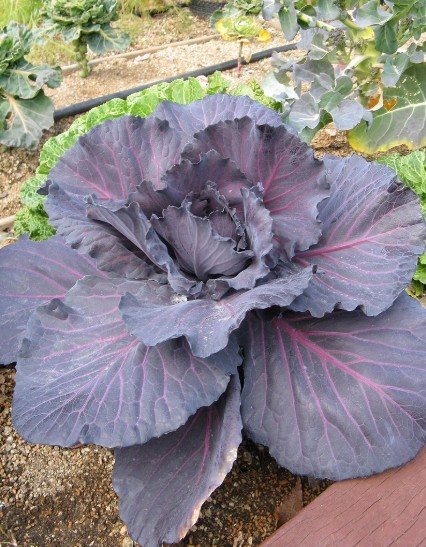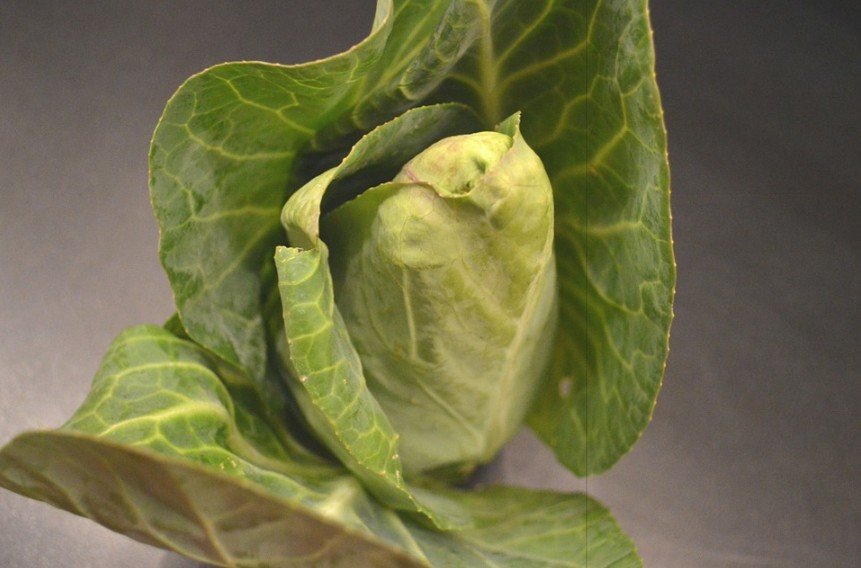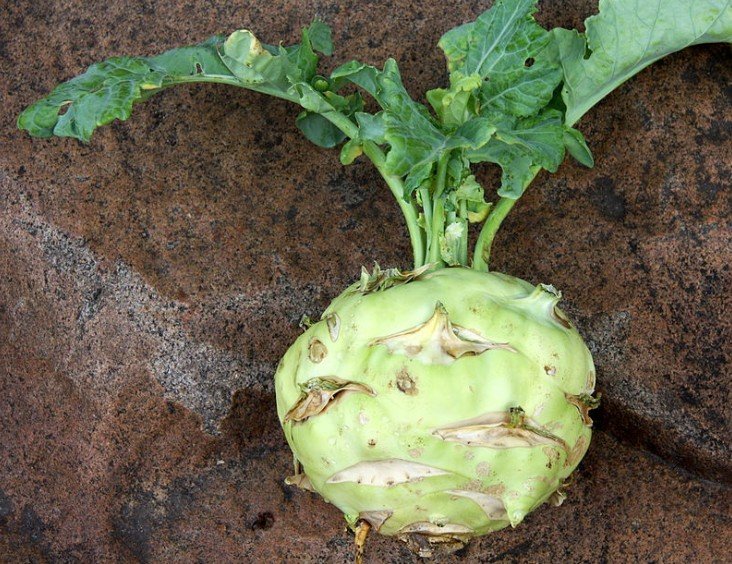Being a member ofthe Brassicafamily, cabbages are healthy, inexpensive, and versatile leafygreen vegetables. They are easily available since they are cultivated all around the world. There are hundreds of different types of cabbages, varying in color, texture, taste, and size. Each type contains low calories and high quantity of vitamins like vitamin C, A, B6, and K, along with other important minerals and mustard oils. This is what makes cabbage one of the healthiest vegetables to add to your diet.
Types of Cabbage
1. Green Cabbage
It is the most common and popular type of cabbage. Green cabbages have densely packed thick leaves that are dark to pale green from outside and pale green or white from inside. They have a large round head that is covered with the outer leaves to keep the interior white. Green cabbage varies in size from 1 lb. to 9 lbs. They can go with everything but are mostly eaten raw. The main types of green cabbage include Danish cabbage, Domestic cabbage, and Pointed cabbage.
2. White Cabbage
White cabbage is one of the most famous and inexpensive types of cabbages. It is also called Dutch cabbage and is a type of green cabbage. Some of the cabbages look white because they are kept in the dark, cold environment. This results in the breakdown of chlorophyll that gives the plants its green color, taking away pale green color of cabbage.
White cabbages area tasty, healthy, and versatile. They contain a lot of minerals like potassium, magnesium, and selenium, as well as vitamins like vitamin C and K.
Germans are the greatest consumers of white cabbage. They eatabout 350,000 tons of it every year. You can store white cabbages for up to 2 months in a fridge, or even store them for up to 6 months in a freezer.
3. Savoy Cabbage
Savoy cabbage is a type of green cabbage, which is smaller in size and has bluish-green leaves. Savoy cabbage is the King when it comes to vitamins. It contains not only vitamin C but also vitamin A and B6. Vitamin A is excellent for your vision and skin, whereas vitamin B6 strengthens your immune system and nerves.
Moreover, it contains mustard oil which is called natural antibiotics; antibiotics protect the body against bacteria and other microorganisms. Savoy cabbages are huge but more delicate and tasty as compared to Green and Red cabbage. They have lacy leaves and are the prettiest among the different types of cabbage.
4. Red or Purple Cabbage
Red cabbage is considered as the festive cabbage in many countries around the globe due to its bright color, which is the visual highlight. Just like Kale and Kohlrabi, red cabbage also contains vitamin C in a quantity that covers up more than the required quantity of your body.
Red cabbages are very healthy due to the presence of antioxidants called anthocyanins. It is also quite good for your immune system and cardiovascular health. However, many people find it hard to digest red cabbages. So, if this is your case too, then you can cook it with ginger or some caraway seeds to support your digestive process.
Red cabbage is a desired ingredient for salads and coleslaw due to its beautiful and shinning color, texture, and satisfying taste. Some of its popular forms include Red express, Ruby ball, and Red drumhead.
5. Pointed Cabbage
Pointed cabbages have a slightly sweet taste, and they are the alteration of white cabbage. They have very delicate leaves and are not very long-lasting, so eat them within three days. They are also very rich with vitamin C and low in calories – this is why they are easy to digest.
You can store pointed cabbage easily. All you need to do is cut it into small pieces and then boil for 2 to 3 minutes approximately. Store it in a freezer, and it will stay great for up to half a year.
6. Kale Cabbage
Kale cabbage offers high nutritional value. There is no other vegetable than Kale that contains vitamin C in such a high amount: 100g per 3.5 oz. that covers more than the recommended daily intake. It also contains other important vitamins like vitamin K and E, along with other minerals and fibers.
Kale contains very low fat and calorie content as well as it is rich in antioxidants. Kale leaves grow on a stem unlike other types of cabbages like Red and Green cabbage, which grows on the head.
7. Cauliflower Cabbage
You can easily find this type of cabbage in almost all the local stores. You can eat not only the florets but also the leaves and stem of cauliflower. They are rich in minerals like iron, sodium, phosphorous, and potassium as well as vitamin C and K. When it comes to mustard oils, cauliflower scores the highest. Mustard oil protects the body against free radicals, viruses, and bacteria. Like all the other types of cabbage, it also has low-fat content and calories.
8. Kohlrabi Cabbage
Kohlrabi is very delicious and has a slightly sweet taste. It contains a good amount of vitamin A, vitamin K, and folic acid. Like Kale cabbage, kohlrabi also contains 100 g of vitamin C per 3.5 oz., which covers up more than the daily requirement of our body. Mustard oil in kohlrabi has a great impact on sensitive stomach and intestine. You can eat kohlrabi raw or cook properly- they can be consumed in either way.
Benefits of Cabbage
We all know that cabbages are packed with lots of vitamins and minerals. Despite having a very high nutritional value, cabbages are still overlooked. Adding all kinds of fruits and vegetables in your diet reduces the risk of a lot of diseases and problems. It is advised to add more leafygreen vegetables to your diet as they reduce heart diseases, diabetes, obesity, and many more. They not only prevent you from lethal disease but also boost energy, aid in weight loss, and improve your overall health.
Following are some of the top benefits of cabbage:
- Enhance digestion
Due to the presence of high fiber and water content, eating cabbages prevent constipation and keep a healthy digestive tract. Cabbages also contain probioticsthat play a significant role in enhancing our overall body metabolism.
- Helps in detoxification
Cabbages contain Vitamin C and Sulphur that helps our body in removing uric acid and free-radicals. Moreover, antioxidants present in cabbage juice helps in the detoxification of the liver. The liver is a vital organ of our body – it is involved in many metabolic functions, production of protein, etc. Therefore, it is essential to keep this organ healthy and free of toxins.
- Lowers blood sugar level
Cabbages also help in lowering and maintaining blood sugar levels. Red cabbages contain betalains, which help in lowering sugar levels in the blood and support the production of insulin. Due to its antioxidant and anti-hyperglycemic properties, it aids in reducing the risk of developing diabetes and acts as a medicine.
- Aids in weight loss
Cabbages are rich in minerals, antioxidants, vitamins, and have a high fiber content. Moreover, cabbages have low calorie and fat content. This is why it is considered ideal for people who are trying to lose weight. The high value of nutrients and fibers makes you feel full and controls your appetite.
- Boosts the immune system
Cabbages are excellent for your immune system as they contain vitamin C in abundance. Vitamin C is significant for maintaining a strong immune system.
- Reduces Cholesterol level
Eating cabbages lower down your cholesterol level. Fiber and other nutrients that are present in cabbage attach themselves with the bile acids present in the intestine and pass through the stool easily, instead of being absorbed in the blood. Furthermore, eating steamed cabbages, enhance its cholesterol-lowering powers.
- Fight cancer
Oxidative stress and chronic inflammation are considered the risk factors of cancer, and due to its antioxidant and anti-inflammatory properties, cabbages are considered anti-cancer food. Cabbages contain glucosinolates that can be converted into the isothiocyanate compound. They prevent many different types of cancers, including prostate cancer, breast cancer, and colon cancer.
- Enhance brain health
Cabbages are very good for your mental health, especially purple cabbage. Purple cabbage contains antioxidant (anthocyanin) and vitamin. They enhance your concentration level as well as other mental processes. Vitamin K fights against serious mental conditions like Alzheimer’s and dementia. Anthocyanin helps in preventing memory loss (short term as well as long term)
- Decreases Inflammation
When we don’t take sufficient anti-inflammatory nutrients, this can become hazardous for our inflammatory system, and we might experience chronic inflammation. Red cabbages contain anthocyanins, which is an anti-inflammatory compound. The other types of cabbage also contain anti-inflammatory compounds like polyphenols. The presence of these compounds makes cabbage one of the best anti-inflammatory foods.
- Glowing and clear skin
Cabbages contain vitamin C and K along with antioxidants, Sulphur, and silicon which give you clear and glowing skin. Sulphur and silicon are known as beauty minerals. They protect your skin from free-radical damage and maintain its glow.
For more information on this, check out this article.
- Relieve headache
If you are suffering from chronic headaches, drink 1-2 oz. of raw cabbage juice. Or you can crush cabbage leaves, place in a piece of cloth, and apply on your forehead; it helps in relieving headaches.
Final Words
Cabbages are, without any doubt, extra-ordinarily healthy food with amazing nutritive content – rich in vitamins, minerals, antioxidants and fibers. Due to low-fat content, cabbage promotes weight loss. Adding cabbages to your food will not only enhance its taste and appearance but will also prevent you from certain diseases and promote your overall mental as well as physical health.

